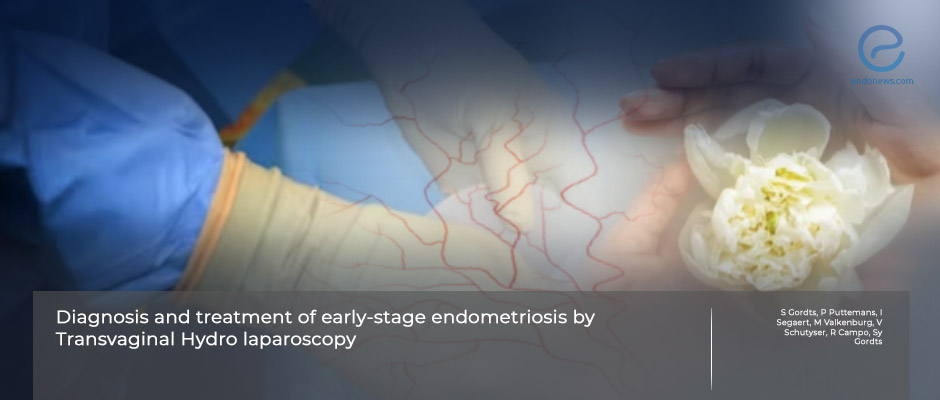Transvaginal Hydro laparoscopy for diagnosing and treatment of early stages of endometriosis
Apr 19, 2023
Transvaginal hydro-laparoscopy helps with the early diagnosis of endometriosis.
Key Points
Importance:
- Transvaginal hydro laparoscopy can be a useful tool for both diagnosing and treating endometriotic lesions in the early stage.
Highlights:
- The usefulness of transvaginal hydro laparoscopy for the diagnosis and treatment of peritoneal and ovarian endometriosis in patients without obviously visible preoperative pelvic pathology is addressed.
What's done here:
- This study examined whether transvaginal hydro laparoscopy can be a tool for early diagnosis of peritoneal and ovarian endometriosis.
- The results of the transvaginal hydro laparoscopy of 2288 patients referred from a tertiary clinic for fertility problems from Belgium were evaluated.
- Endometriosis in these patients was not diagnosed by ultrasonography or clinical examination before transvaginal hydro laparoscopy.
- Three main outcomes of the study were the feasibility of transvaginal hydro laparoscopy, pathological identification of the disease, and an increased pregnancy rate.
Key Results:
- Peritoneal or ovarian endometriosis was diagnosed in 365 of 2288 patients. Forty-five of them lost follow-up.
- More than 70% of the lesions were located on the left side of the abdomen.
- Early lesions were characterized by the presence of early blood vessel formation called "neo-angiogenesis".
- After the cauterization of lesions, 20% of patients had spontaneous conception, the pregnancy rate was 58% after eight months.
- The total in vivo pregnancy rate including both spontaneous/IUI was 43.8% with a clinical pregnancy rate after 8 months by IUI/AID was 29.7%.
Lay Summary
Transvaginal hydro laparoscopy is a minimally invasive procedure that allows the exploration of the female pelvis. An obliterated Douglas pouch by a fixed retroverted uterus, an ovarian endometrioma greater than 2 cm, and the presence of deeply infiltrated endometriosis are contraindications for the procedure.
During the routine laparoscopic approach to the female pelvis, a simple needle puncture to Douglas leads to access to the pelvis transvaginally. Using a water distention medium through the transvaginal needle further increases the detection accuracy of adhesions compared to CO2. Working underwater requires perfect hemostasis and appropriately following the microsurgical principles. Vessels should first be cut and then coagulated to avoid uncontrolled bleeding.
Dr. Gordts et al. from Leuven Institute for Fertility & Embryology, of Belgium, evaluated the overall percentage of pregnancies in 2288 primary or secondary infertile women referred to their tertiary clinic. This paper was a part of this study that covers 320 infertile patients who were diagnosed with endometriosis during transvaginal hydro laparoscopy. Endometriotic lesions were noted mostly on the left side of the abdomen and peritoneal neo-angiogenesis was the key to early endometriosis. Bipolar cauterization was applied to the lesions. Twenty percent of patients were permitted spontaneous conception, and the pregnancy rate was 58% after eight months in this group. The clinical pregnancy rate after 8 months by IUI/AID was 29.7% and the overall in vivo pregnancy rate including both spontaneous/IUI was 43.8%.
This interesting study addressing the advantages of transvaginal hydro laparoscopy for the diagnosis and treatment of peritoneal and ovarian endometriosis in patients without obviously visible preoperative pelvic pathology was recently published in the journal named Facts Views and Visions in Obstetrics and Gynecology.
Research Source: https://pubmed.ncbi.nlm.nih.gov/37010334/
ultrasound transvaginal hydro laparoscopy carbonization coterization endometrioma minimal endometriosis infertility endometriosis.

